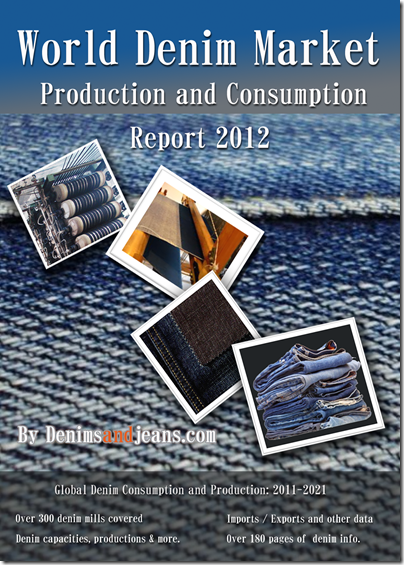Cone is probably the most famous denim mill in the denim industry ever. A recently formed business unit, Cone & Burlington Apparel Solutions, is bringing new dyeing innovation and flexibility to apparel brands with the introduction of Affinity™. Using an entirely new Eco Friendly way to dye fabrics, the Affinity process allows water to be recycled from one dye bath to another without the worries of remaining dyes and chemicals. The Affinity process mimics the ring dye look of indigo dyeing but with the flexibility of dyeing smaller quantities, as little as 100 units per color.
Gary Kernaghan, executive vice president Apparel Solutions, says
“Initial customer interest has been good. Currently Levi, Quiksilver Fossil, Esprit and Hugo Boss are sampling the product. Consumers can expect to see product at retail around the Spring/Summer of 2013”.
“The Affinity process catches people’s attention because it is different and it answers several different needs,” says Kernaghan. “It is early yet, but we believe it has good potential.” As he explains, colors are a big fashion item right now but they lend themselves to smaller lot sizes, and this season’s hot color may not be next season’s hot color. With Affinity garments, you can dye as many or few garments as you want and with more color choices. The Affinity process also supports the environmental commitments of apparel brands with the use of fewer chemicals, less water and energy, and virtually no residual dyes or chemicals left to dispose.
The Affinity Difference
To understand the Affinity process and why it is different you need to first understand the basics of dyeing and specifically indigo dyeing. The dyeing process involves chemical reactions that cause the dye to adhere to yarn or fabric. In its natural state, cotton yarn has a negative charge. Likewise indigo dye has a negative charge. As you know from basic chemistry, you must have opposite charges to attract. So in their natural states the dye would not stick to the yarn. To overcome this, salts and soda ash are added to the indigo dye bath to change the dye charge and allow the dye to adhere to the yarn. Another unique feature of indigo dyeing is that only the outside of the yarn is dyed while the core of the yarn remains the natural color. The Affinity process dyes the same so garments, when stonewashed or hand-sanded, can achieve the character commonly found in traditional indigo denims.
So what makes the Affinity process different? Using a two-step process,
- The yarn is first treated using a patented process that changes the chemical charge of the yarn to positive. No dye is applied at this point. The yarn is then woven into denim using treated yarns in the warp and untreated yarns in the fill, and sewn into a garment as usual.
- Next the garment is dyed in specially designed dye equipment. Because the yarn, now fabric, has a positive charge and the dye added has a negative charge, the dye adheres to the garment without any additional chemicals. This is where the process derives its name — the dye has an Affinity for the yarn.
See the process of Affinity dyeing in this video
The Affinity process uses reactive and/or direct dyes, in a full array of colors – neutrals, brights, darks and pastels. There is no limit to color as there is in traditional indigo processes.
Almost all the dyes are completely exhausted or absorbed, onto the garment, leaving the water clear and ready for recycling to the next load. Cone Burlington claims that affinity dyed garments also have superior color fastness so that even the brightest of these shades maintain their vibrant shades throughout home launderings.
Currently Affinity garments are made in China using partner mills and garment factories. Trials are currently underway with ITG’s Cone Denim Jiaxing (CDJ) facility to supply certain yarns for the garments.
To understand more about the process , we spoke to Gary Kernaghan and Sonny Fong from Cone Burlington and asked them about whether the normal indigo dyeing is possible once yarn is treated by their process and also to understand the extra costs involved in this process. They replied-
“Affinity process is a part of invention with machineries and combined with yarn treatment technique. The machines can adjust yarn size, quantity and volume in order to fit the requirements. Mechanical information in under patent process….
Average cost is approx. 20+ % higher then normal pigment / wet garment dye. Remember, it is no minimum, no need to pre-plan stock or inventory and is a green and sustainable process. ”
Check out our latest report on the World Denim Industry :






